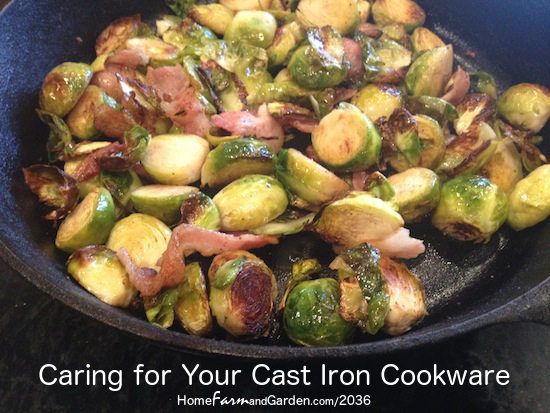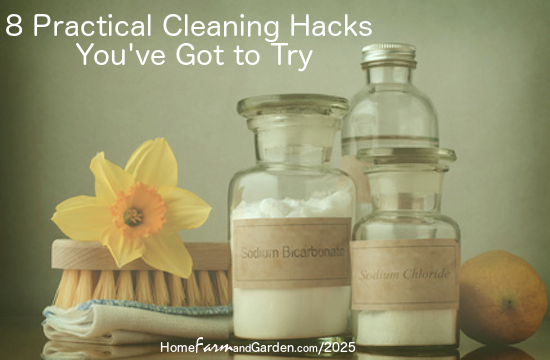The one piece of cookware I find myself reaching for over and over again is my heavy-duty 15″ cast iron skillet. (affiliate link)
Without question, it meets my personal trifecta for the perfect kitchen tool: it’s durable, versatile and economical. However, I’ve definitely put it through its paces over the years…
Like most people, I wasn’t born knowing how to properly care for cast iron cookware, so I’ve committed pretty much every major sin you can imagine (on more occasions than I care to admit):
- I’ve soaked it in water overnight
- Used steel wool to remove stuck-on food
- Put it away before it was totally dry
Yet, in spite of my best efforts to the contrary, it still looks great and functions like a dream.
But I did have to atone for my sins… here’s how I restored my own skillet to its former glory:
How to Care for Your Cast Iron Cookware
Over time, cast iron cookware develops a thin protective coating known as “seasoning” from the natural fats and oils associated with the cooking process. This coating fills in all the nooks and crannies inherent in the pan metal to create a smooth, uniform surface.
This seasoning is what gives cast iron cookware its wonderful non-stick quality.
Today, most new cast iron cookware comes with this protective coating or “seasoning” already on them. If the package has “pre-seasoned” printed on it, your new pan should be ready for use because the manufacturer has already completed the initial seasoning process for you.
When you buy a brand new pre-seasoned cast iron skillet, all you need to do is rinse it out in hot water and dry it completely by placing on your cooktop over medium-high heat. Make sure the entire surface is dry before putting away because cast iron can and will rust if water is left sitting on its surface.
After cooking with your new cast iron skillet, wash it by hand in hot water right away. Avoid putting your skillet in the dishwasher or soaking it in water overnight due to the potential for rust.
Instead, once the pan cools to the touch, rinse it under hot water while using a dishcloth or soft-bristled nylon brush to remove cooked-on particles. Also avoid using any harsh soaps, detergents, or metal scouring pads and scrapers as these items can damage or remove the seasoning.
How to Re-Season Your Cast Iron Skillet
If your seasoned cast iron cookware loses its sheen for whatever reason, you may need to re-season it to get it back into tip-top shape. If you search online for how to re-season a cast iron skillet, you may be a bit overwhelmed by all the different points of view out there regarding the best methods and types of oil to use.
For example, there is a lot of debate about what oil to use due to the different smoke points associated with each type of oil and the release of unhealthy free radicals caused by using oils with too-low smoke points.
As a result, flaxseed oil is often suggested as an ideal oil to use due to its high smoke point.
According to Lodge, a leading manufacturer of cast iron cookware, the proper way to re-season their products is to start by preheating your oven to 350 – 400˚. While it is heating, wash the pan with hot, soapy water and a stiff brush. (It’s okay to use harsher soap and a stiff brush for this because you’re not trying to protect the original seasoning at this point).
Once clean, rinse and dry completely before applying a very thin coat of melted solid vegetable shortening or other cooking oil of your choice. Place the pan upside down on the upper rack of your preheated oven, with a metal cooking sheet under it to catch any drips.
Leave pan in hot oven for at least an hour. Turn oven off and allow the skillet to cool completely while still inside the oven. If the coating isn’t as consistent as you’d like when you take it out of the oven, repeat this process until the desired sheen is achieved.
As you can see, it IS possible to restore a cast iron pan or skillet that has seen better days. (My own beloved skillet is proof of that!) I promise, if you use these tips to care for your cast iron cookware, you’ll keep your pieces in great shape or be able to restore battered ones to pristine condition.

 8 Practical Cleaning Hacks You’ve Got to Try
8 Practical Cleaning Hacks You’ve Got to Try